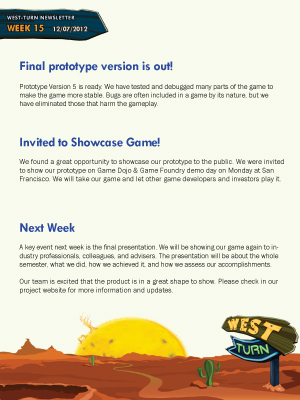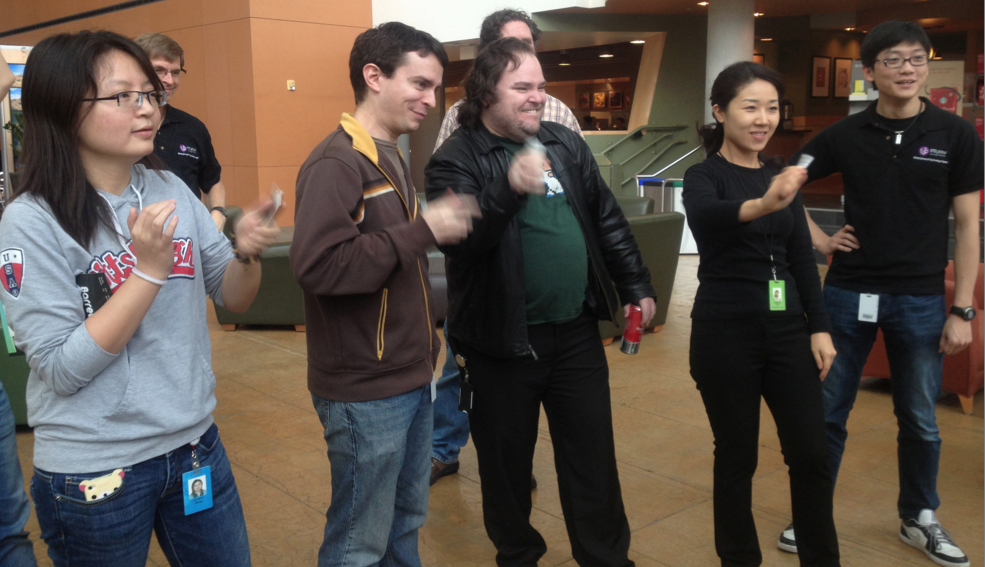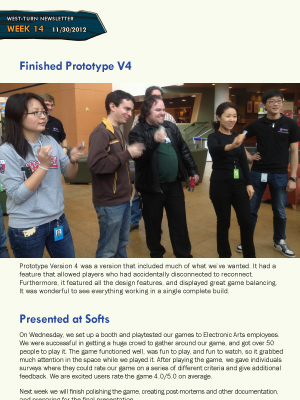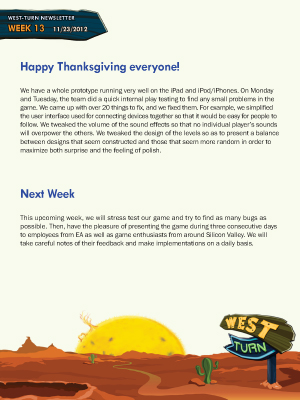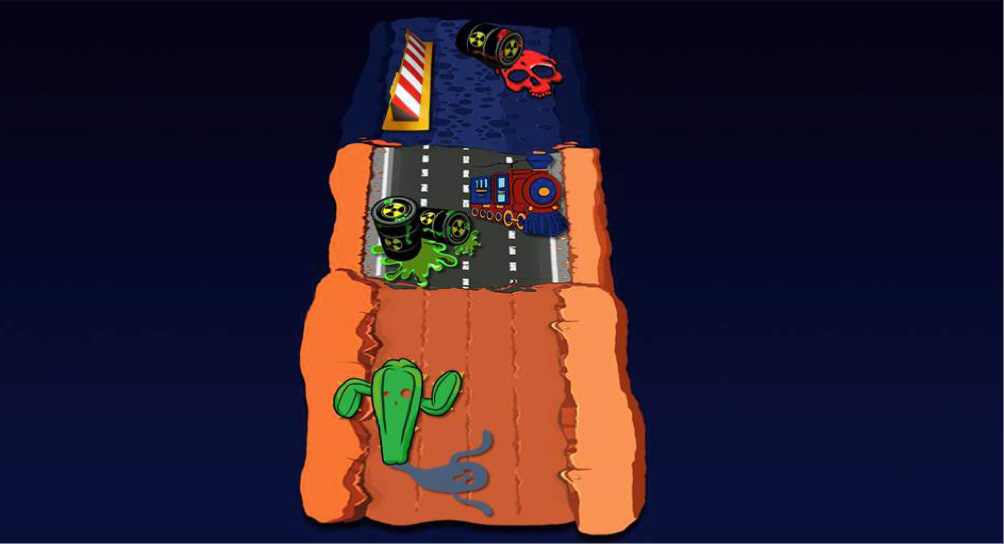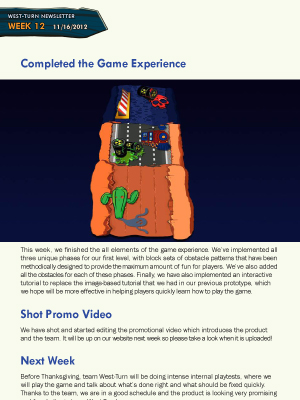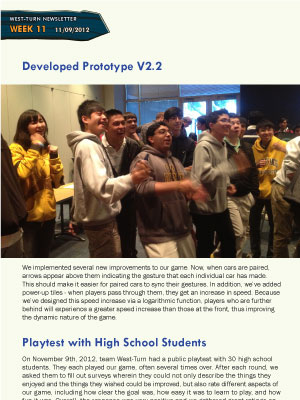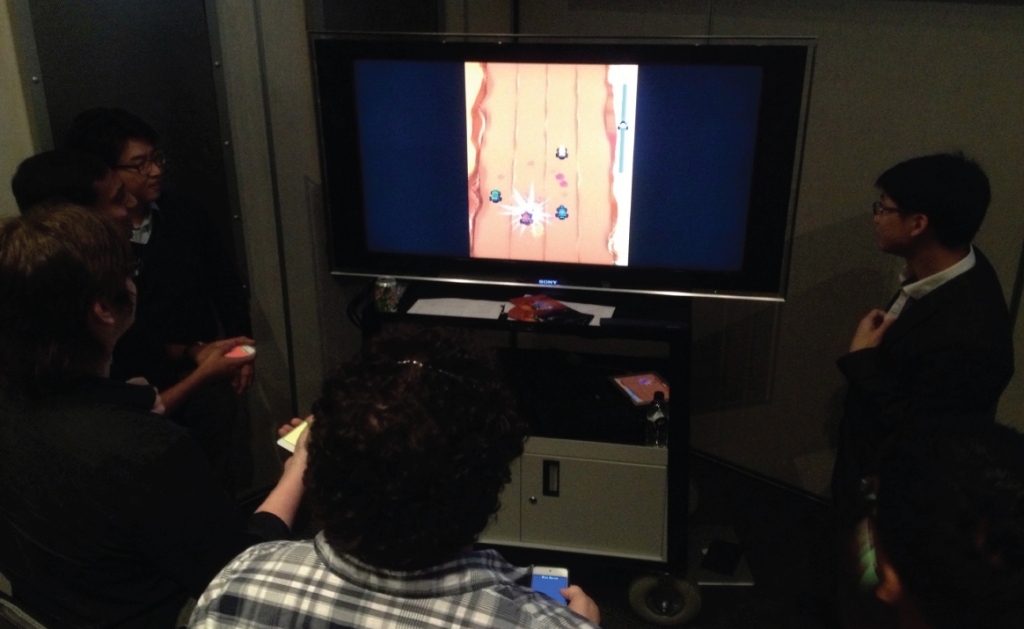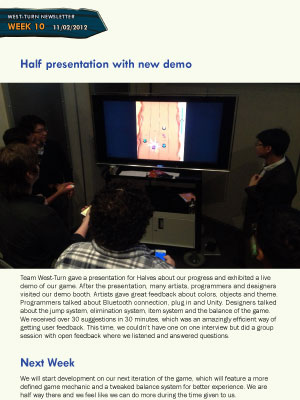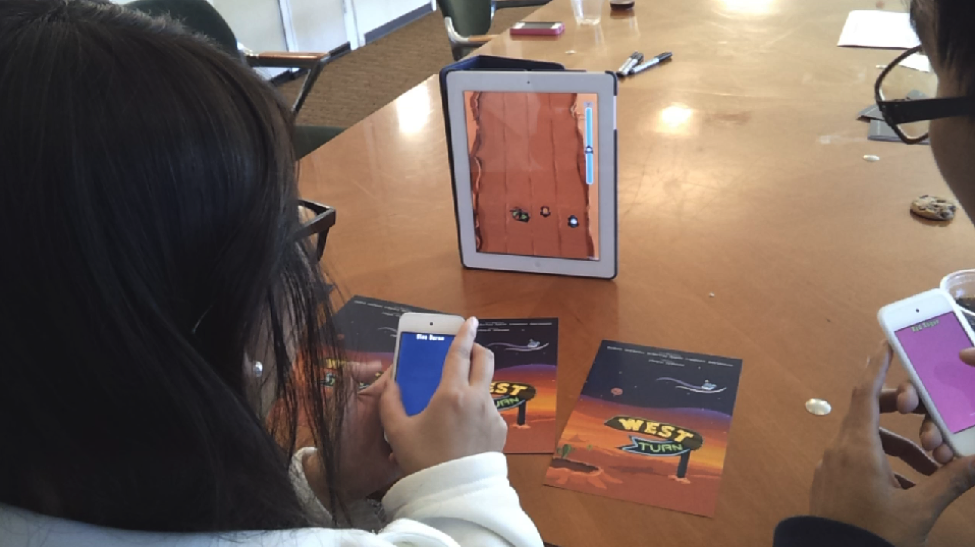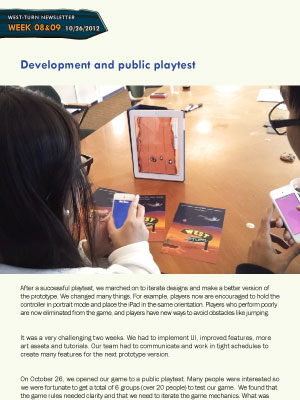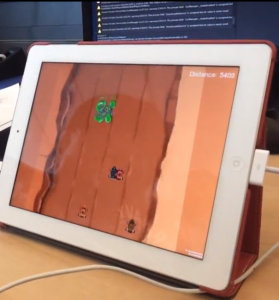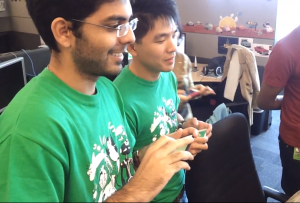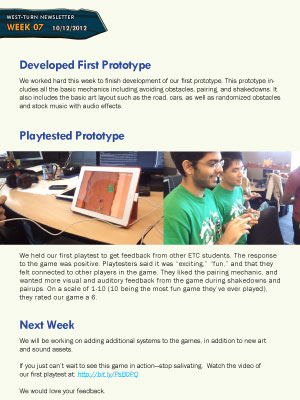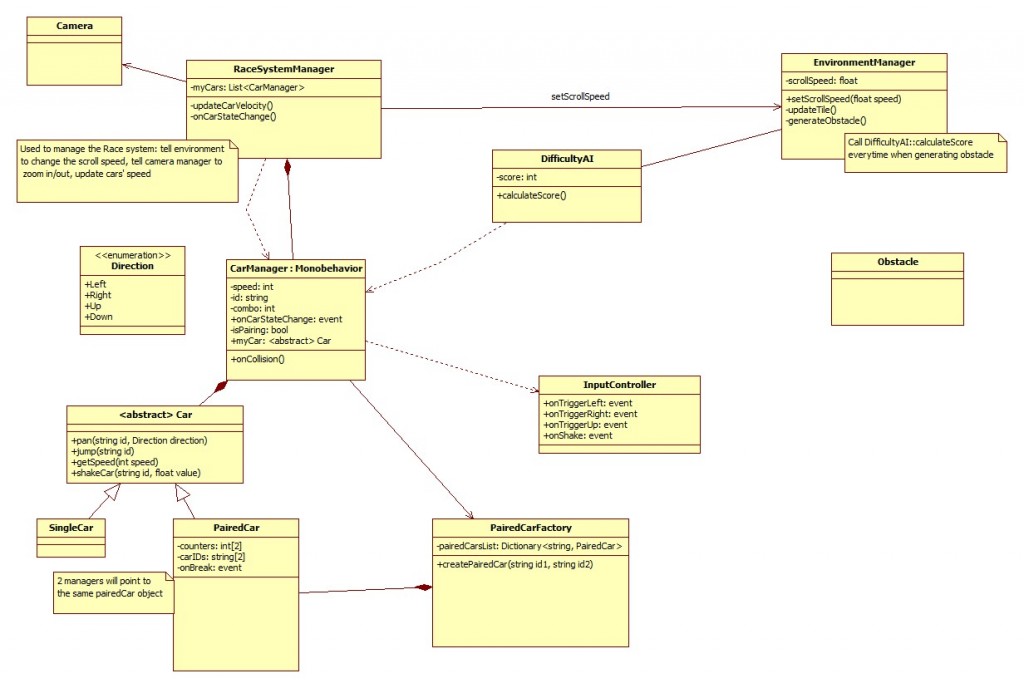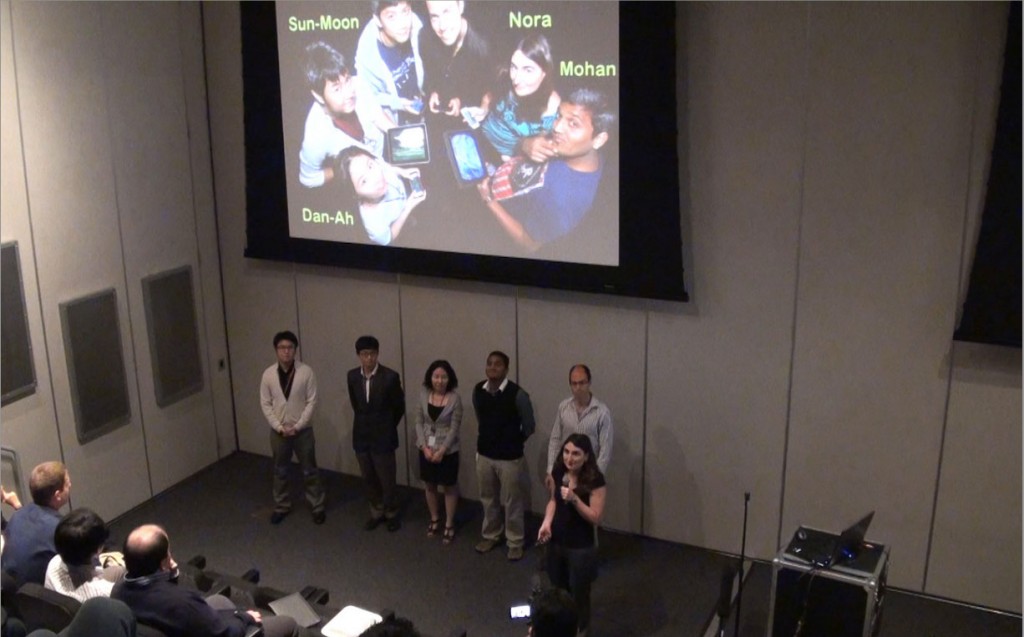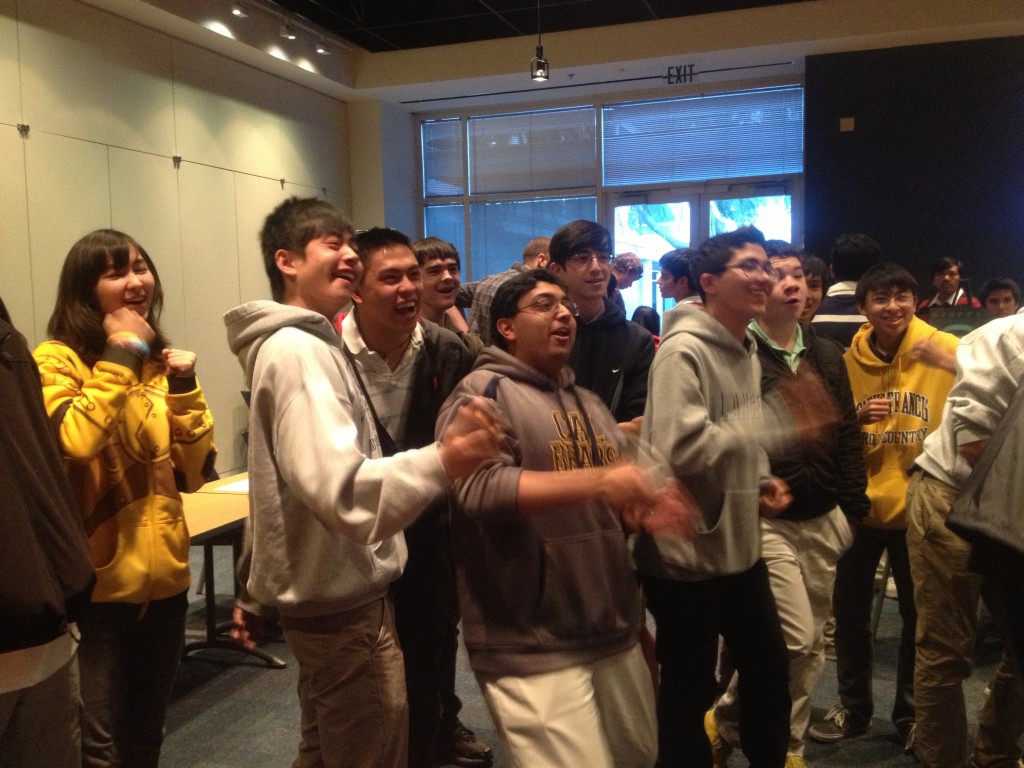
Developed Prototype V2.2
We implemented several new improvements to our game. Now, when cars are paired, arrows appear above them indicating the gesture that each individual car has made. This should make it easier for paired cars to sync their gestures. In addition, we’ve added power-up tiles – when players pass through them, they get an increase in speed. Because we’ve designed this speed increase via a logarithmic function, players who are further behind will experience a greater speed increase than those at the front, thus improving the dynamic nature of the game.
Playtest with High School Students
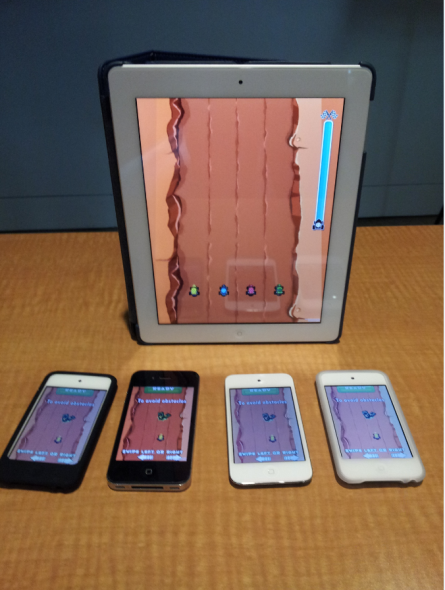 On November 9th, 2012, team West-Turn had a public playtest with 30 high school students. They each played our game, often several times over. After each round, we asked them to fill out surveys wherein they could not only describe the things they enjoyed and the things they wished could be improved, but also rate different aspects of our game, including how clear the goal was, how easy it was to learn to play, and how fun it was. Overall, the response was very positive and we gathered great ratings on all accounts.
On November 9th, 2012, team West-Turn had a public playtest with 30 high school students. They each played our game, often several times over. After each round, we asked them to fill out surveys wherein they could not only describe the things they enjoyed and the things they wished could be improved, but also rate different aspects of our game, including how clear the goal was, how easy it was to learn to play, and how fun it was. Overall, the response was very positive and we gathered great ratings on all accounts.
We took advantage of this playtest to also do some A/B testing in order to figure out whether cars which lag behind should be eliminated. It seemed as if both versions were equally fun, so we’ve decided to create a new version we hope will marry the advantages of each. In the first 2 minutes of the new version, we will not allow cars to be eliminated. In the last 30 seconds of the game, we’ll allow cars to be eliminated. This will hopefully make people who survive until the very end happy. At the same time, we will avoid players from being eliminated too quickly.
Next week, we will start developing our PV3, where we will be using our level editor to build level 1 for the game. More obstacle and art is coming.
Let’s go team West-Turn!

